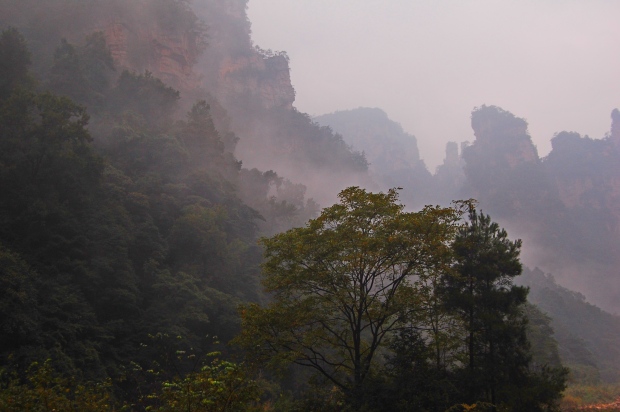Green is my favourite color; it is most soothing to the eyes.
Urbanization and desertification are threats to the survival of green areas, although reforestation and green measures help to combat them. Still, there are considerable green areas all over the world – mainly in the form of hills, forests, country parks and gardens. The best green views are those associated with lakes, rivers, waterfalls and ponds.
People say there are 52 shades of green; whether you can see them depend on the location, season, latitude of the place. In the tropics and sub-tropics where there are lots of sunshine and many of the vegetation remain green throughout the year, the darker shade of green prevails. Further away from the equator, in the higher latitudes and especially in Spring, you can see a gradation of green, ranging from the light and yellowish green to the much darker shades.
I like looking at the green color in my travels; they always give me a sense of peace and tranquility. Below is a collection of green views from various locations around the world, which convey different atmosphere, that I hope you would enjoy:
Up in the mountain of Switzerland, where green is the predominant color, accompanying by yellow flowers. . . . . . .
On the shores of West Lake , China, the willow and the grass remain green even towards the end of Autumn . . . . . .
Down under in Queensland, along the shores of Lake Barrine, the leaves remain green and lotus leaves of a lighter shade float on the water. . . . . . . . .
In Koh Samui, Thailnad, the leaves of palm trees are yellowish-green while the grass are abundant and green. . . . . . . . .
Back in Hong Kong, in the New Territories, the leaves are green almost throughout the whole year ; although they seem to be of a darker color. . . . . . .
Up on hills of Scotland, all you can see is green, maybe it has been like that for thousands of years . . . . . . .
By the side of a lake in the Central Park, New York . . . . . . .
High up in JiuZhaiGou mountains, China, the leaves remain green before changing colors in Autumn. . . .  . . .
. . .
Up in the hills of Langakwi island, Malaysia, where the eagles fly, the leaves remain green throughout the year. . . . . . . . .
On the banks of the River Danube, near Budapest, the trees look especially green against a blue sky with white clouds. . . . . . .
Towards the end of Summer, the grass in the steppes of Inner Mongolia is already turning from green to yellowish green. . . . . . . .
By the banks of the Three Gorges, China, where hills rise steeply from the river, the steep slopes on the hills are covered with green grass . . . . . .
By the side of a pond in Okinawa, Japan, where different shades of green peacefully merge together. . . . . . . .
By the side of a waterfall in Plitvice Lakes in Croatia, where green vegetation and water are the only things you can see………
This green view from the country side of Hong Kong, not far from where I live, remains my favourite, as I can always gaze out of my window to have a good look at them, whenever I want to sooth my eyes. What a wonderful world (of green colors)! . . . . . . . . .


































